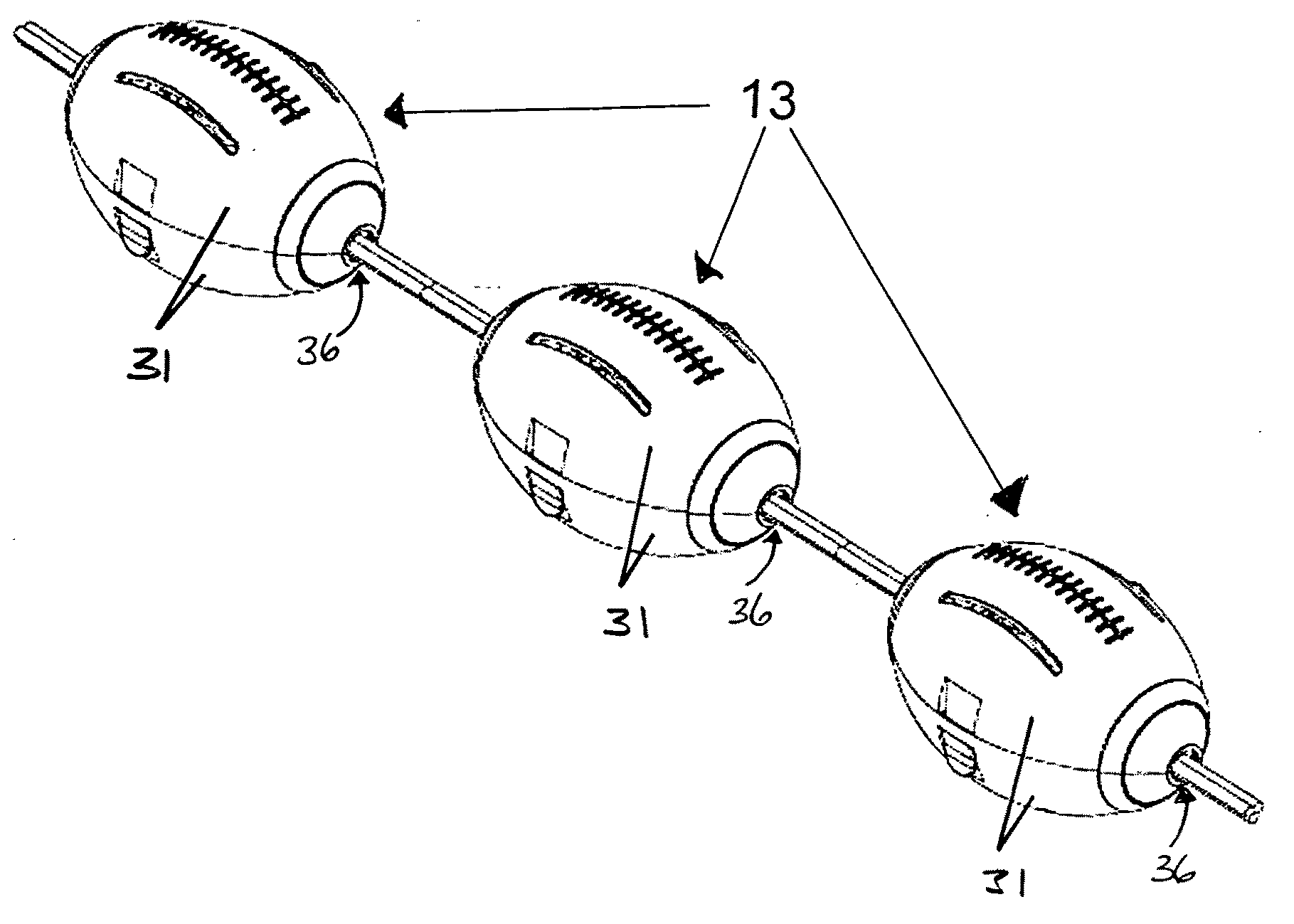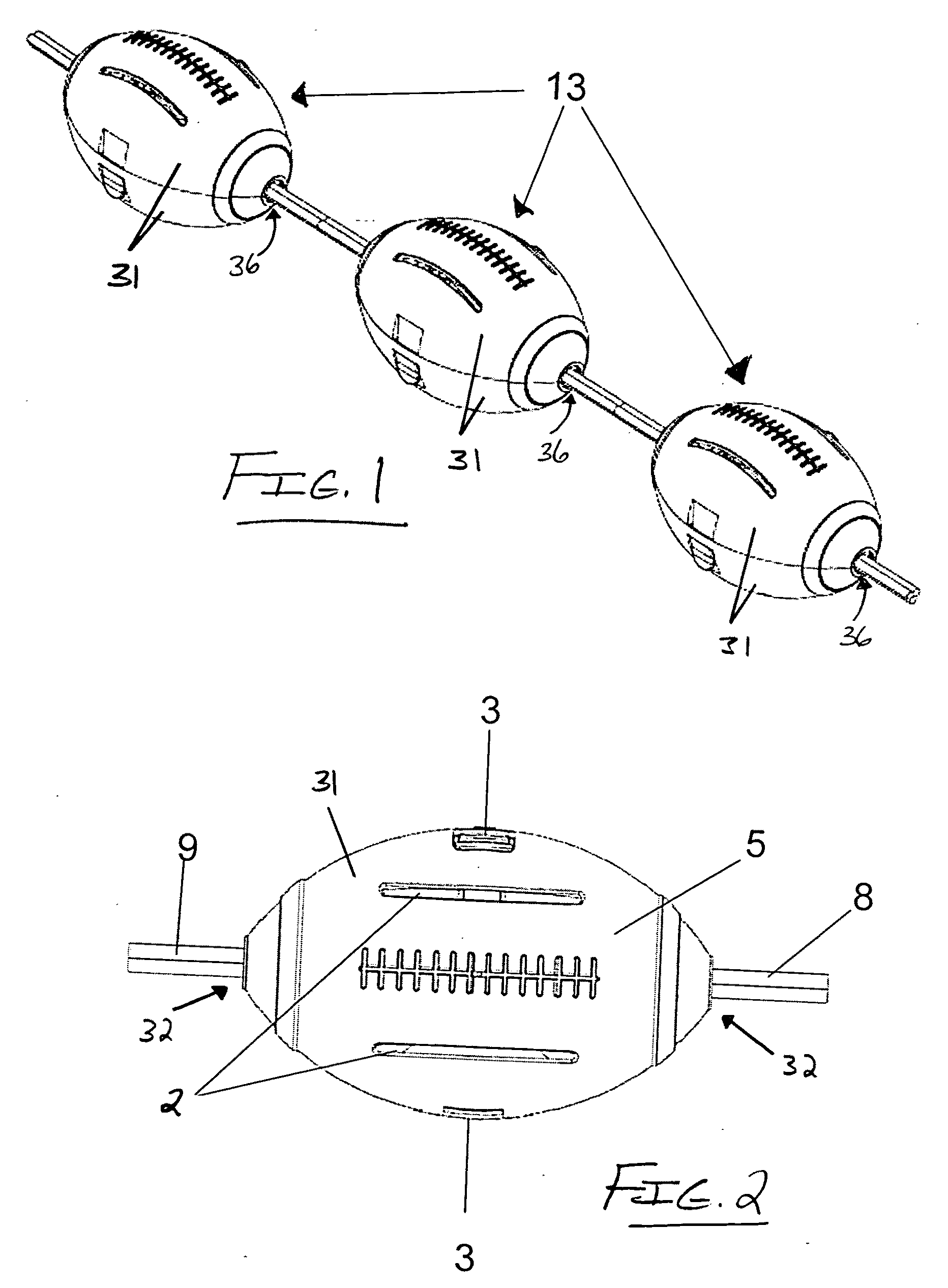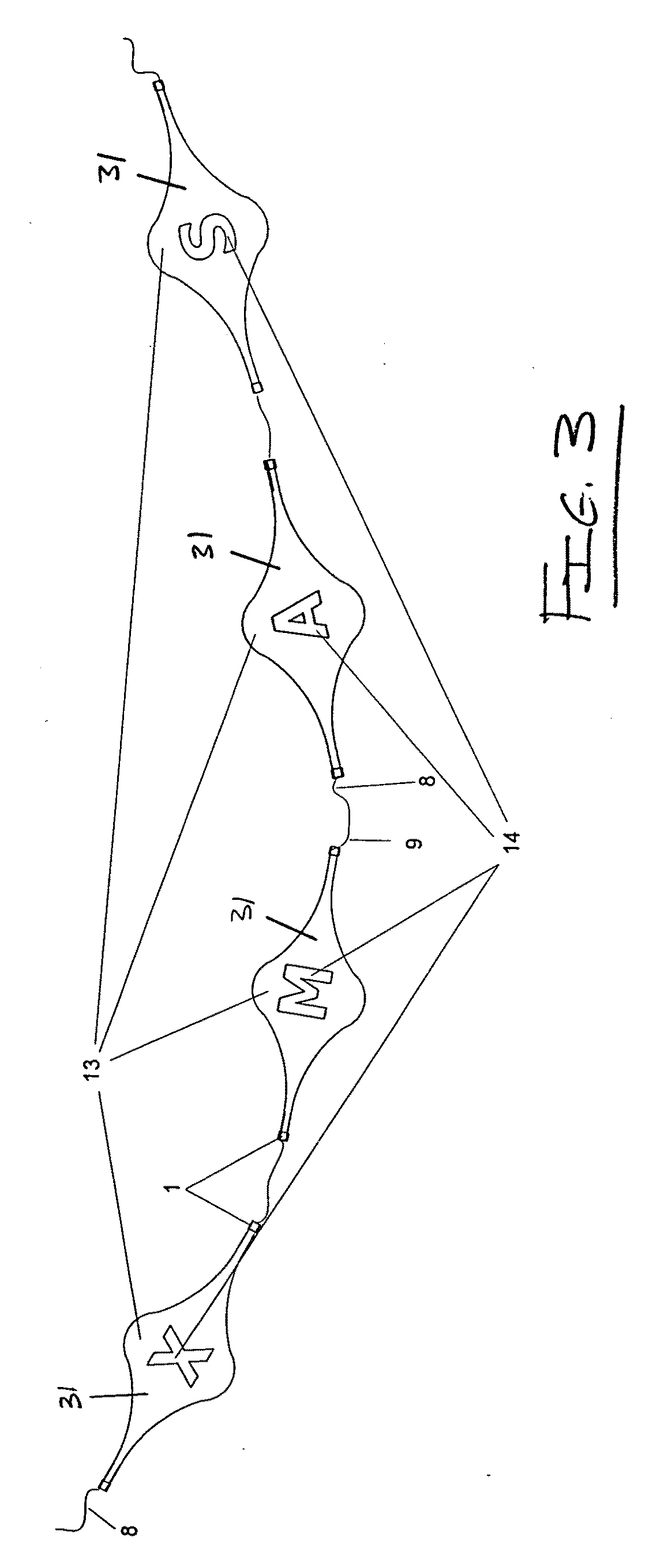In other words, this prior art provides for protective shell that attaches directly to the lamp and thus will transfer damaging forces to the lamp.
Further, it is noted that this prior art provides for a protective shell with no air vents, which will result in a buildup of heat near the lamp thus shortening its useful life.
In other words, the Decorative Light Shade of the '935 patent will transfer damaging forces to the lamp, thereby reducing the effectiveness of said shade.
This will transfer damaging forces directly to the lamp.
The lack of air vents allows heat to build up and will shorten the useful life of the light string.
This may cause a break in the wire and reduce the useful life of the light string.
It is further noted that this prior art does not possess the ability to transfer lamp-damaging forces away from the lamp and onto the wire.
In the prior art damaging forces would cause the shell to slide into the lamp and allow the lamp to be damaged.
Further, the prior art lamp does not have air vents; this will allow heat to build up and will shorten the useful life of the light string.
Further, it appears that this prior art lamp is relatively more difficult to assemble than the present invention.
In this regard, it is noted that the prior art lamp does not provide a latch mechanism to allow the
consumer to change shells according to the season / holiday.
The prior art also shows shells that are much larger than necessary to contain the lamp and they are therefore more harmful to the environment.
The prior art does not contain a flat surface that can be easily manipulated by an automated
assembly machine.
The prior art does not provide means by which glow in the dark decorations may be added to the shell.
The prior art does not have a mechanism to adjust for variation in the dimensions of the
electric wire.
The shell in the prior art has sharp edges that could potentially damage the insulation of the
electric wire.
The shells of the prior art are not mirror images of one another therefore the manufacturing cost is increased.
The prior art does not have an option for glow in the dark shells which eliminates the need for wiring.
This leads to a substantially heavier decoration that is more difficult to install.
The heavier prior art decoration will also be more harmful to the environment due to the increased use of plastic.
The prior art decoration attaches the protective shell directly to the lamp and is more likely to transfer lamp damaging forces to the lamp.
The prior art decoration requires bending wires at severe angles which may damage the wire connection to the lamp.
The prior art does not have any design features which will refract the light and cause it to sparkle.
The prior art requires more lamps and wiring than the invention so the prior art is therefore more harmful to the environment.
Also the larger number of lamps in the prior art make it heavier and more difficult to install than the invention.
The complexity of the prior art make it more susceptible to failure thereby causing an increased damage to the environment due to more frequent and higher weight of product disposed.
From a review and consideration of the prior art, it will be noted the prior art does not provide decorative lighting assemblies comprising certain means for directing lamp-damaging forces away from the lamp structures.
Further, it will be noted that the prior art does not provide decorative lighting assemblies that produce more aesthetically pleasing light by refracting and filtering light; that reduce the environmental
impact by using glow in the dark inserts that allow a lower electrical
power consumption and can eliminate the need for wiring; that transfer the protective function from the exterior packaging to the decorative shells enabling the lamp to be protected throughout its life; that reduce manufacturing costs through a shell that is easier to manufacture,
handle and assemble; that provide a decorative shell that is more easy to change for different holidays; that reduce
snagging tendencies making the light string more easy to install and take down; that improve safety by eliminating sharp edges that can damage the insulation of
electrical wiring; and that reduce fire hazards by isolating the
bulb from dry tree branches and venting to reduce temperature build up.
 Login to View More
Login to View More  Login to View More
Login to View More 


